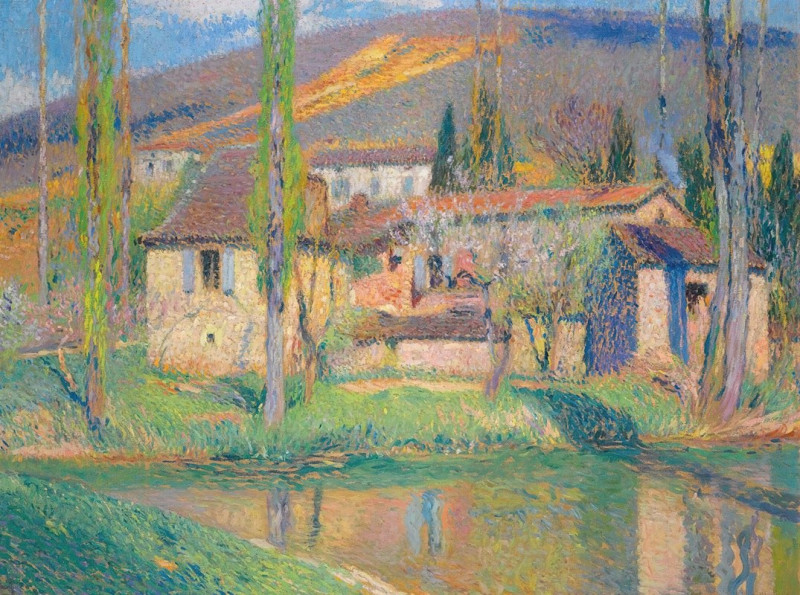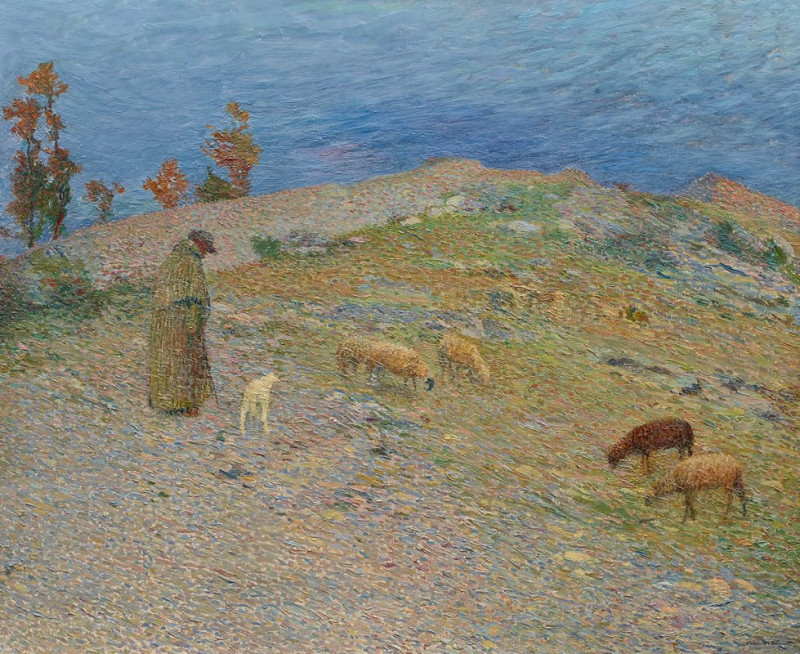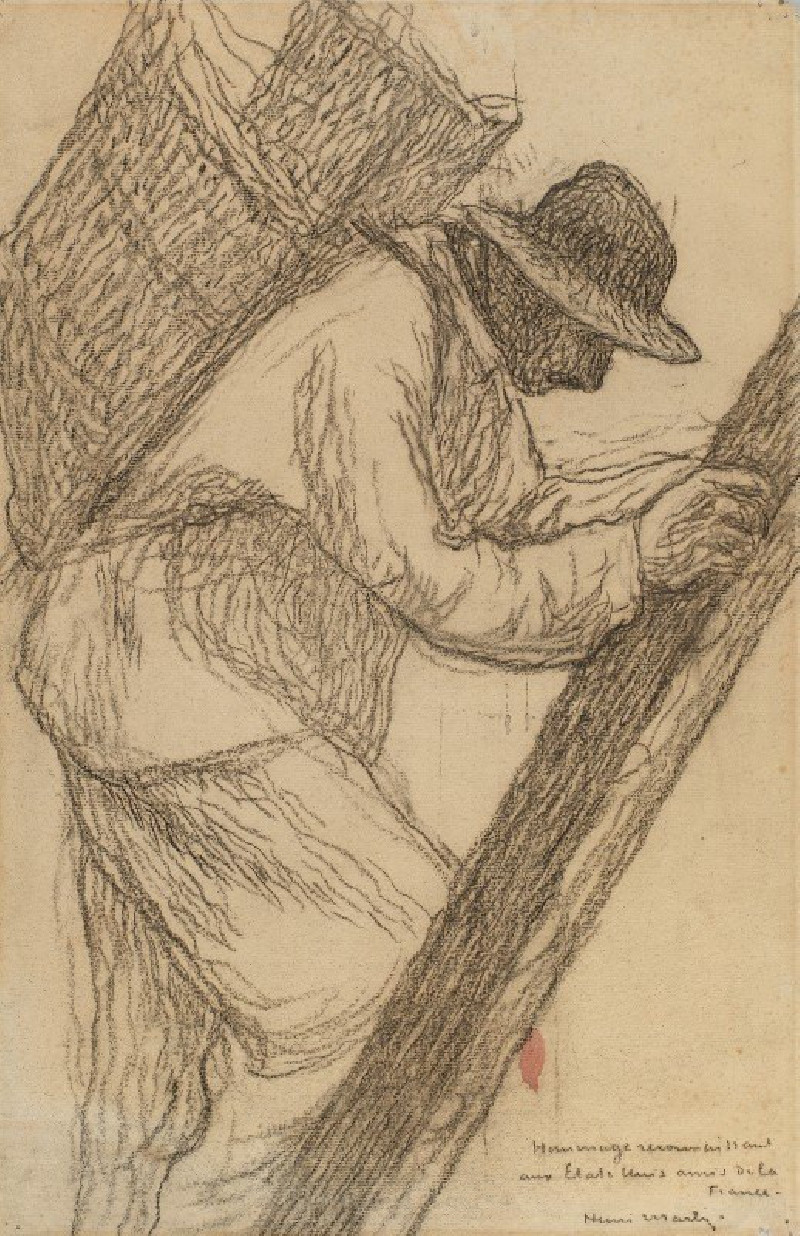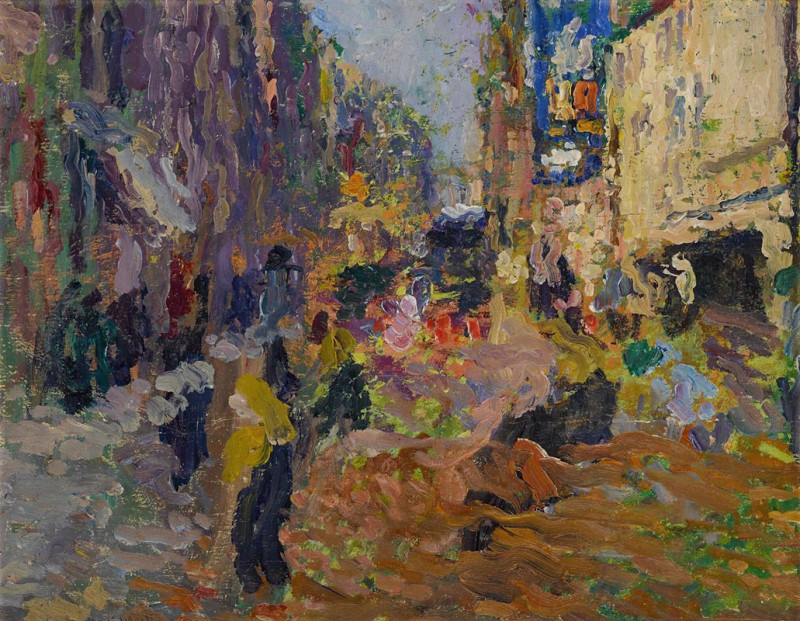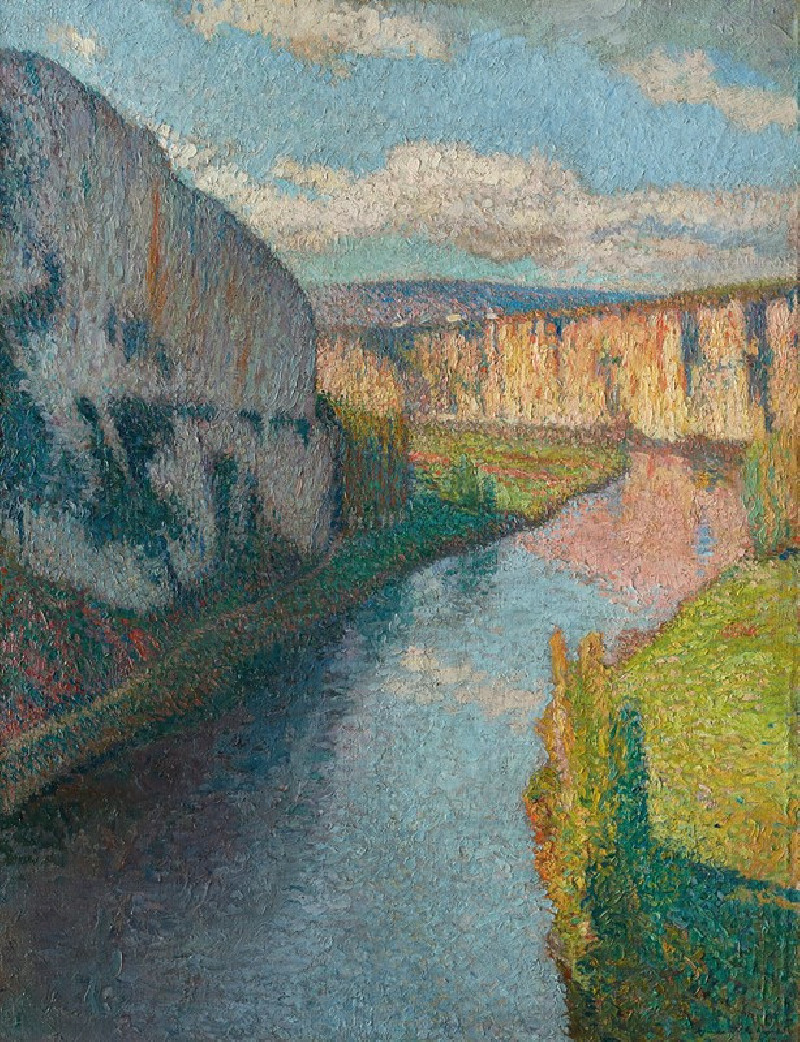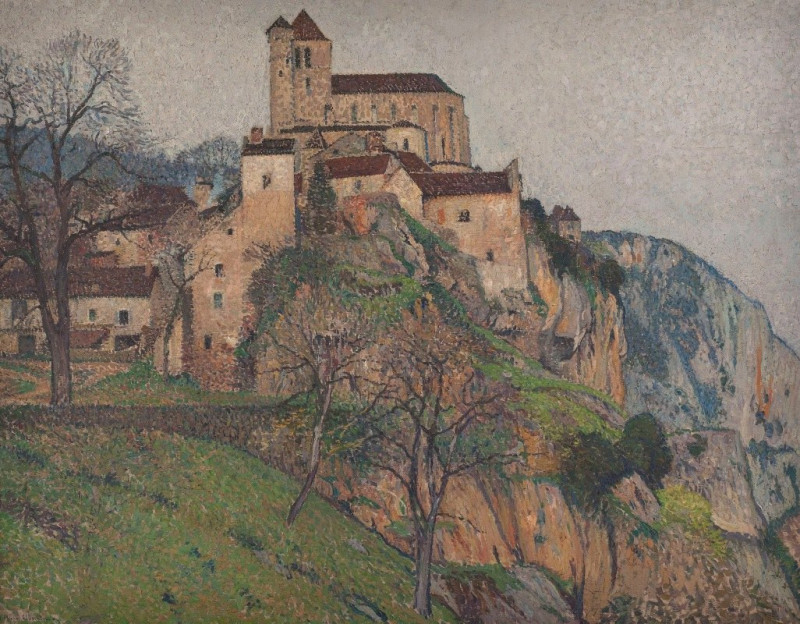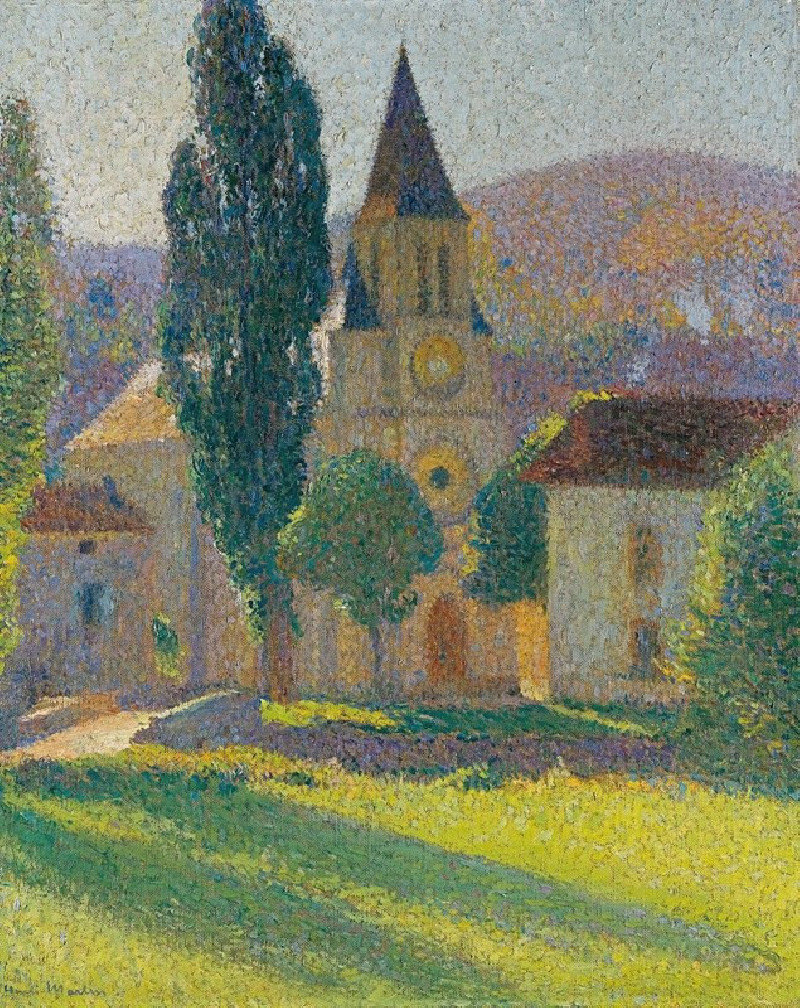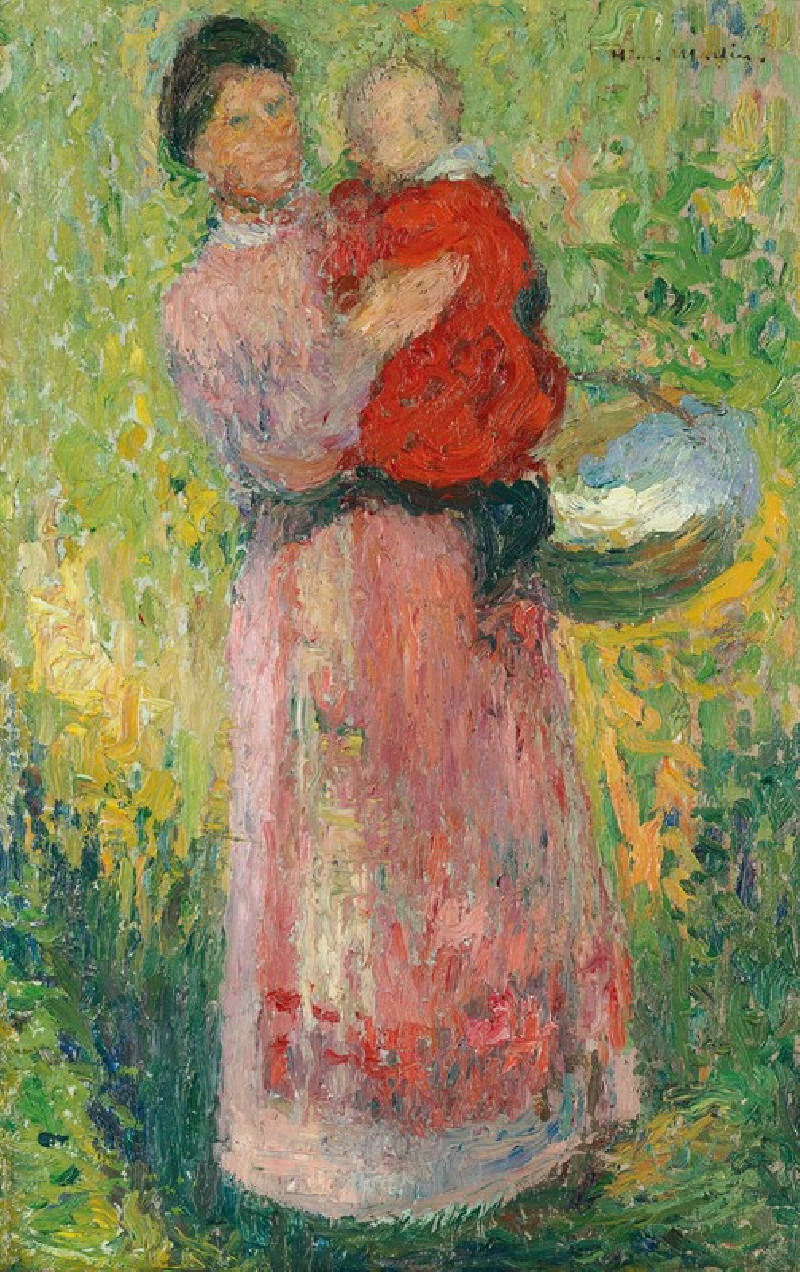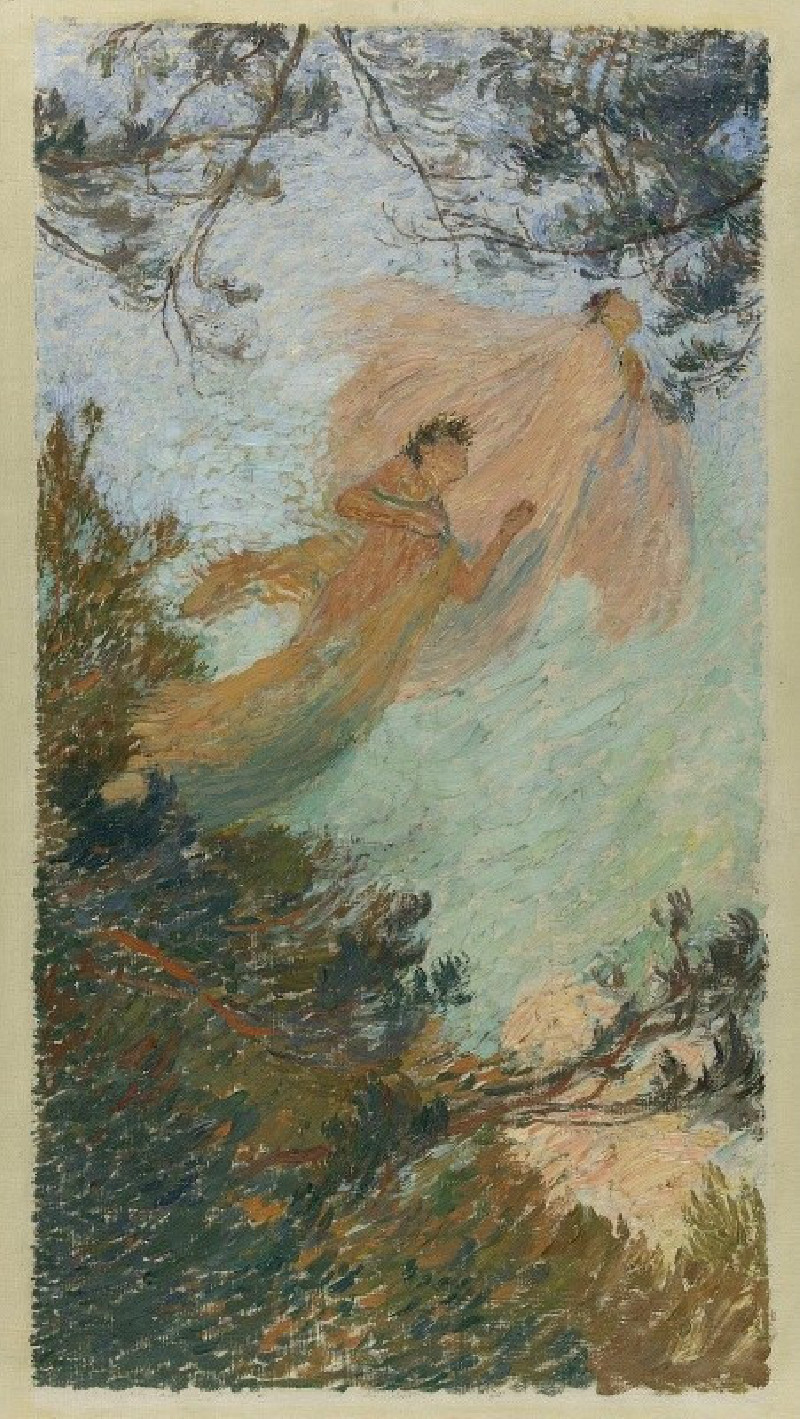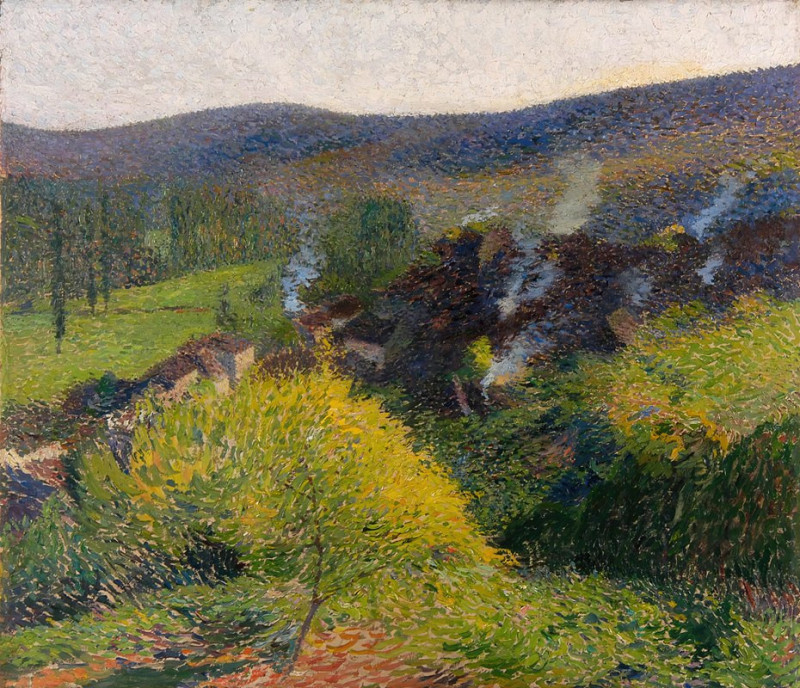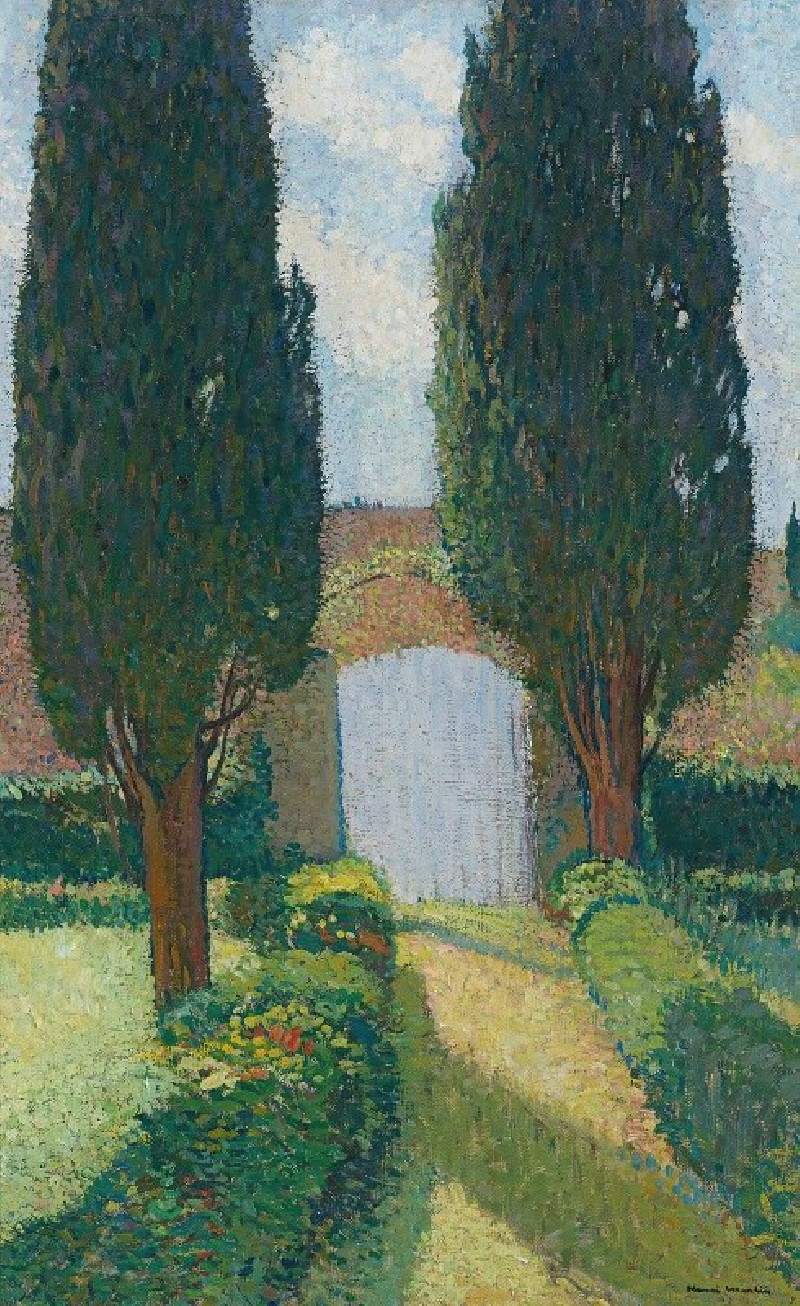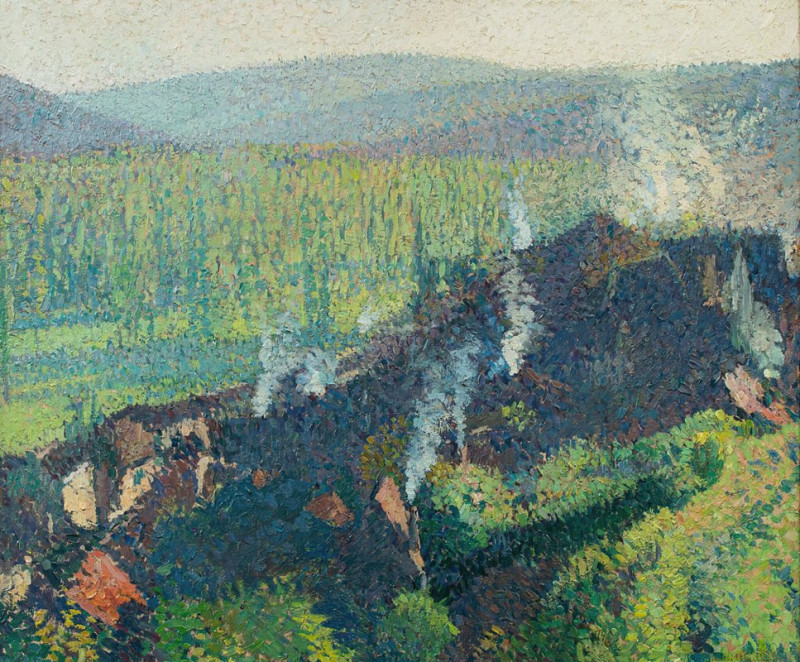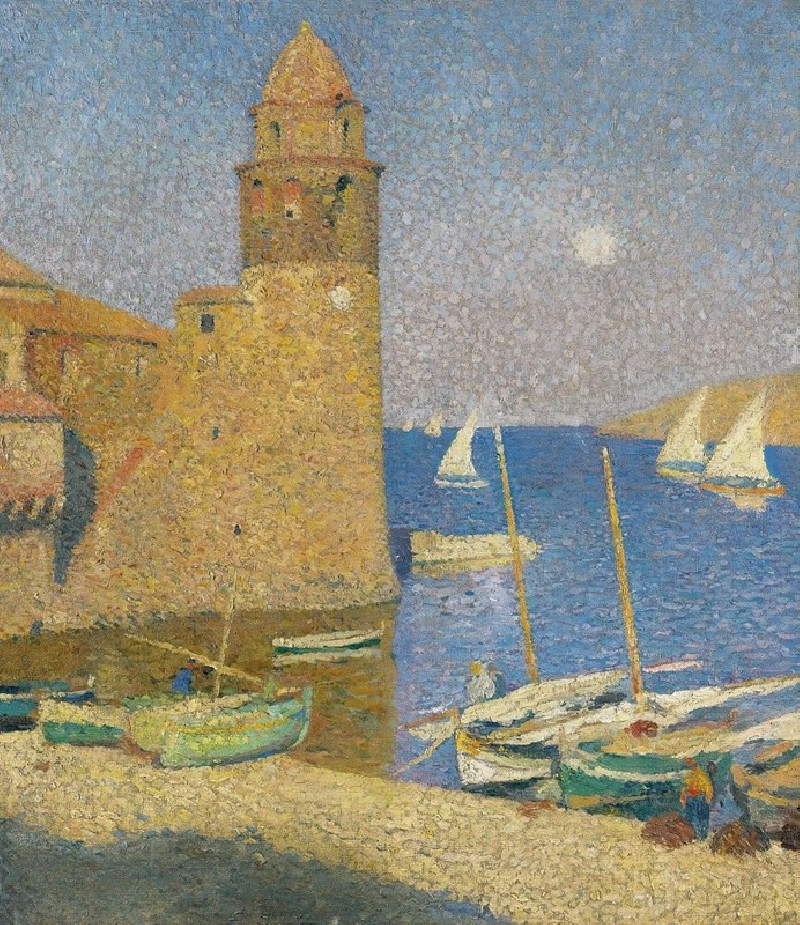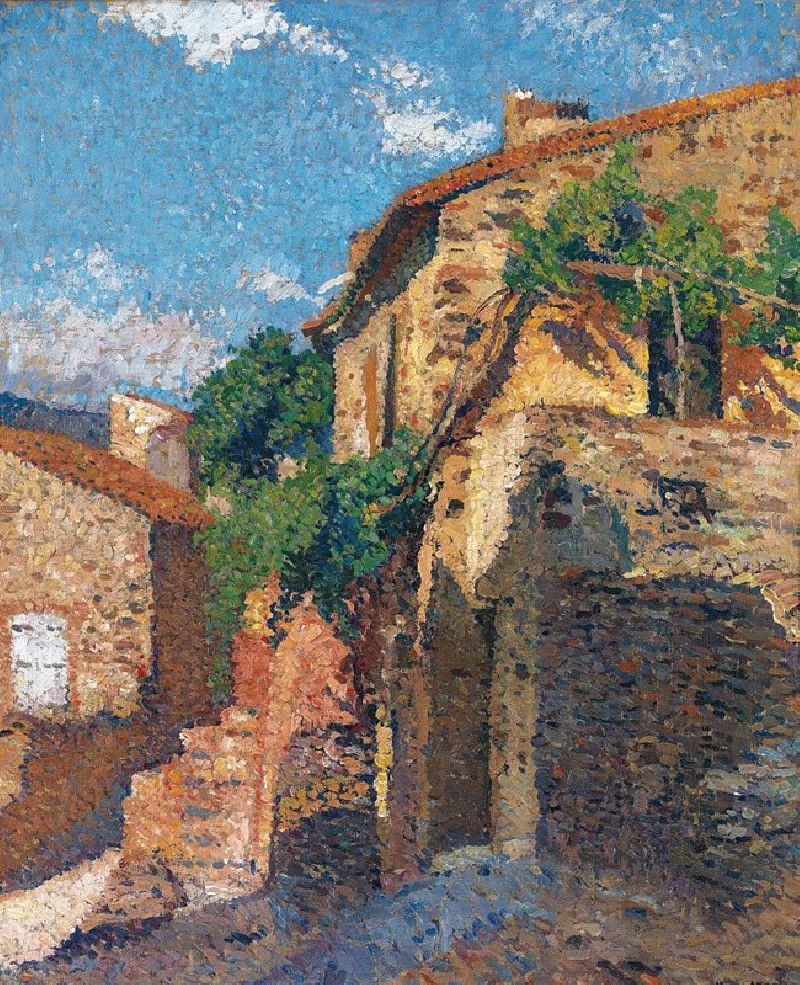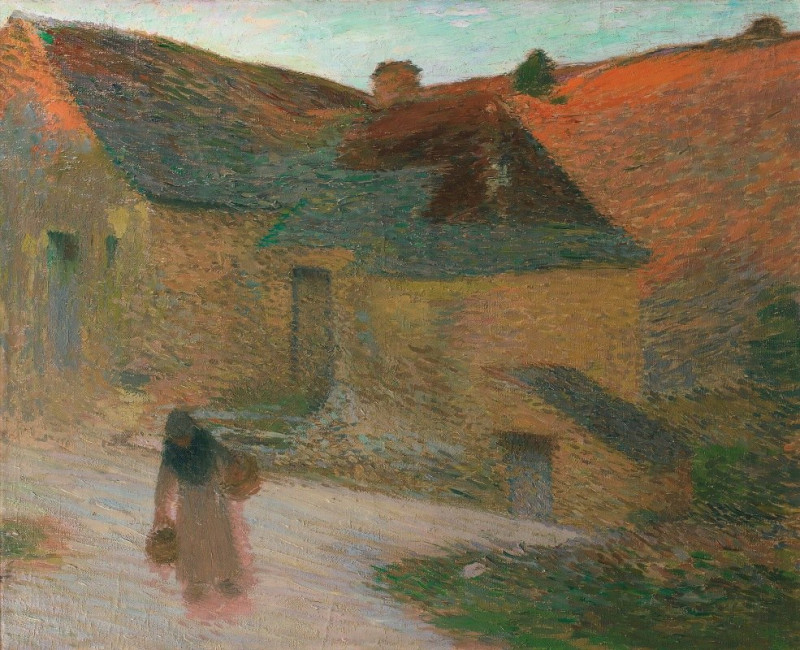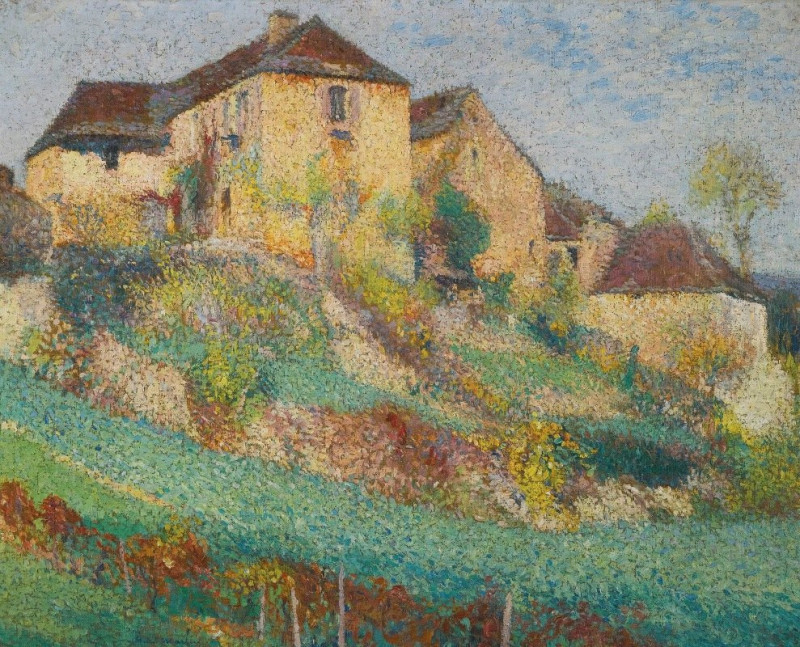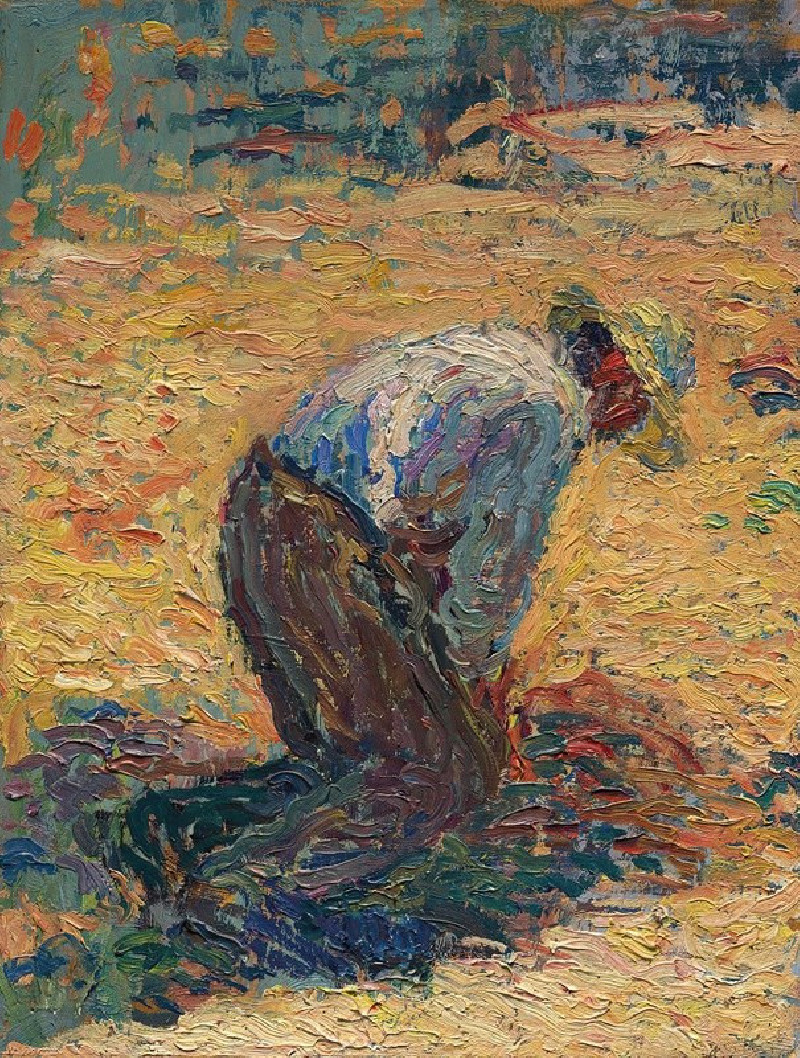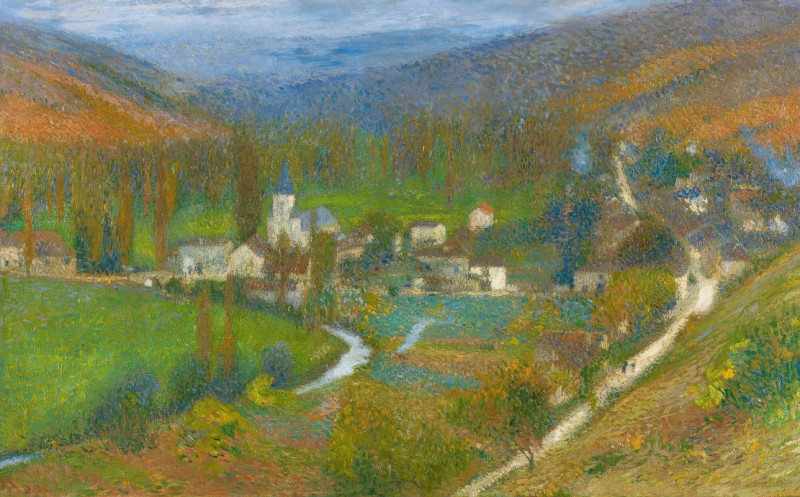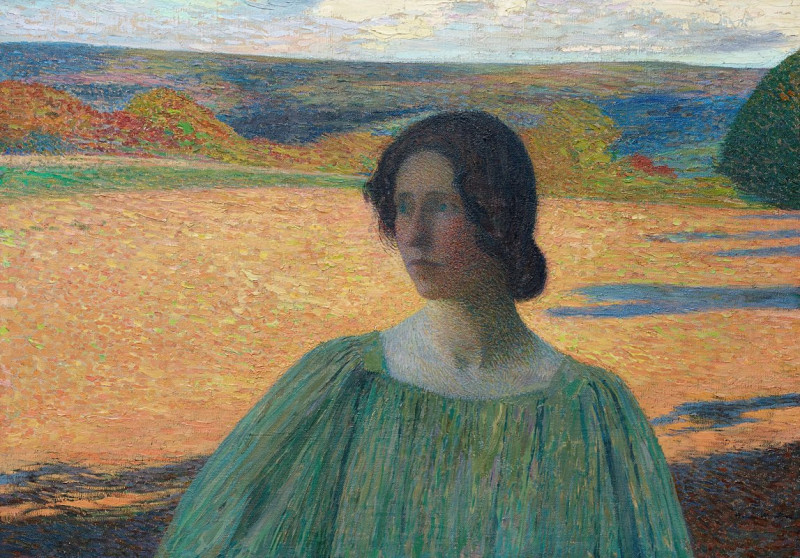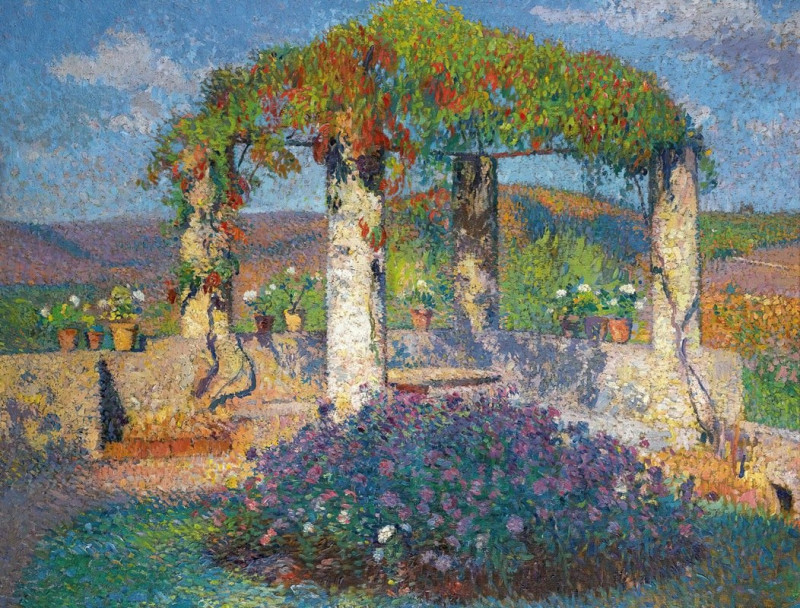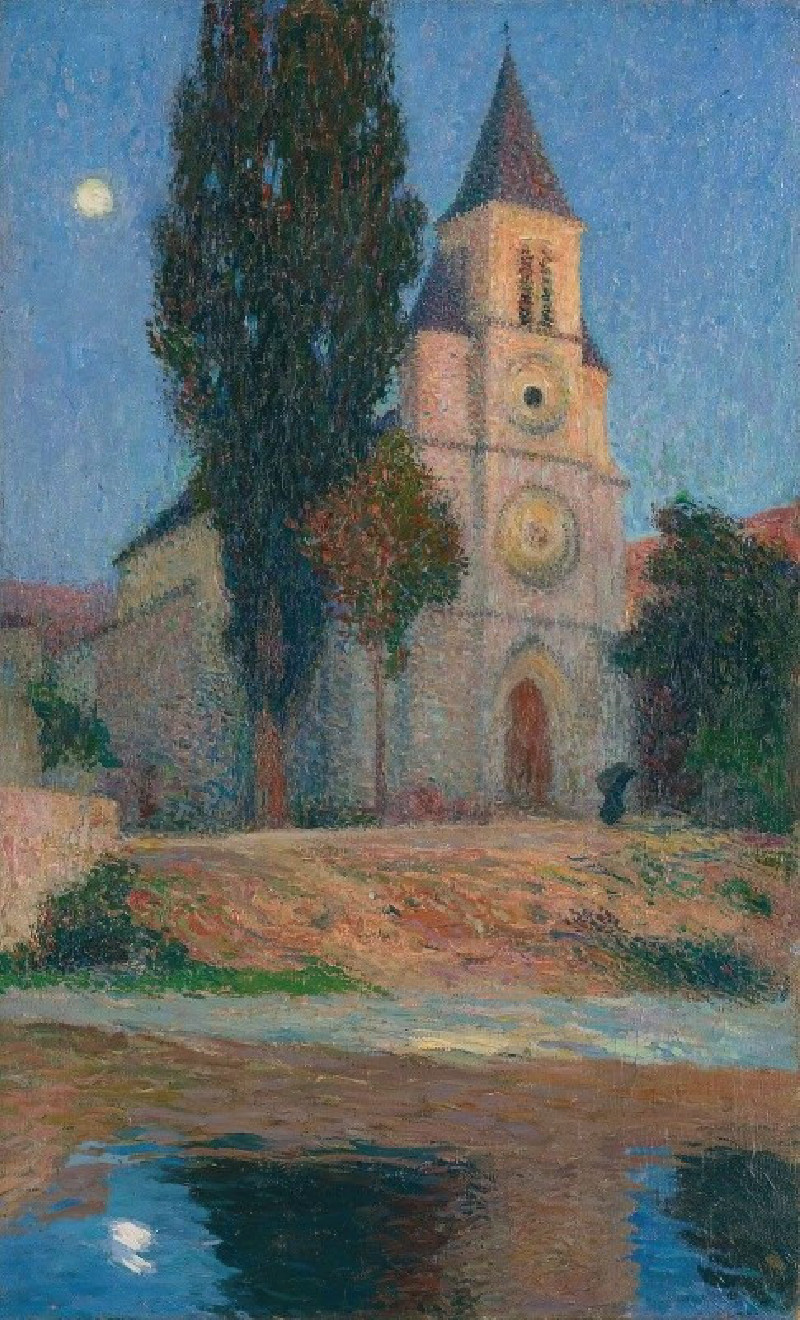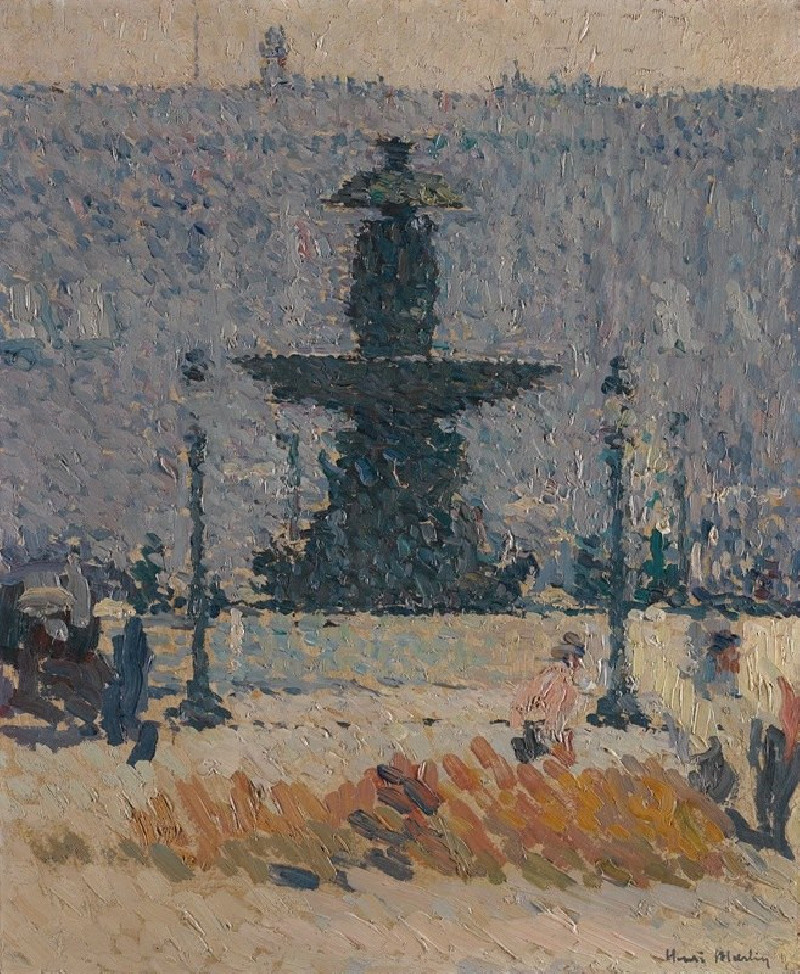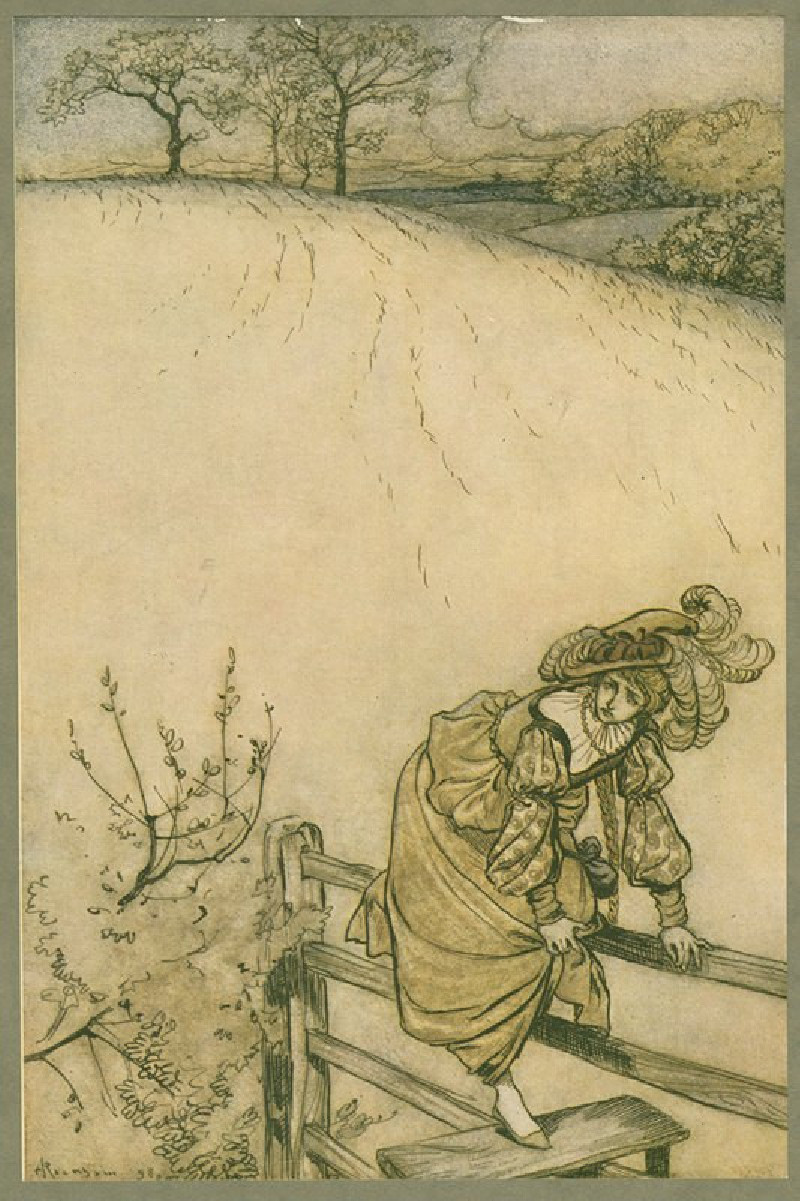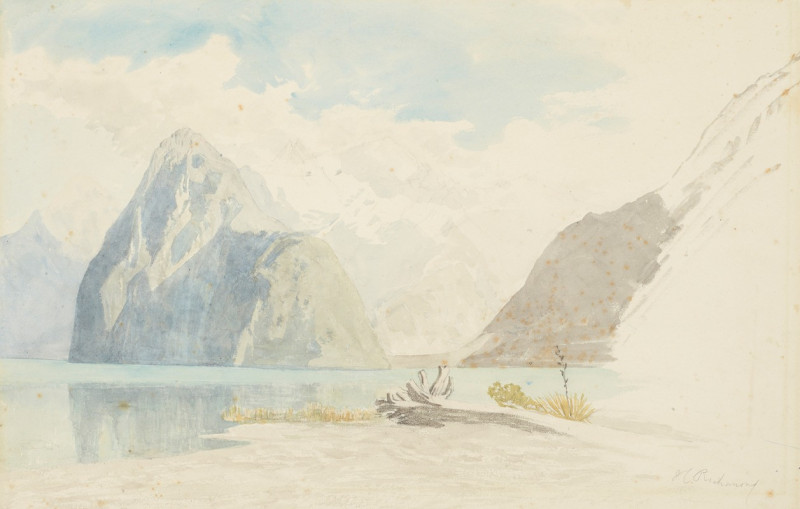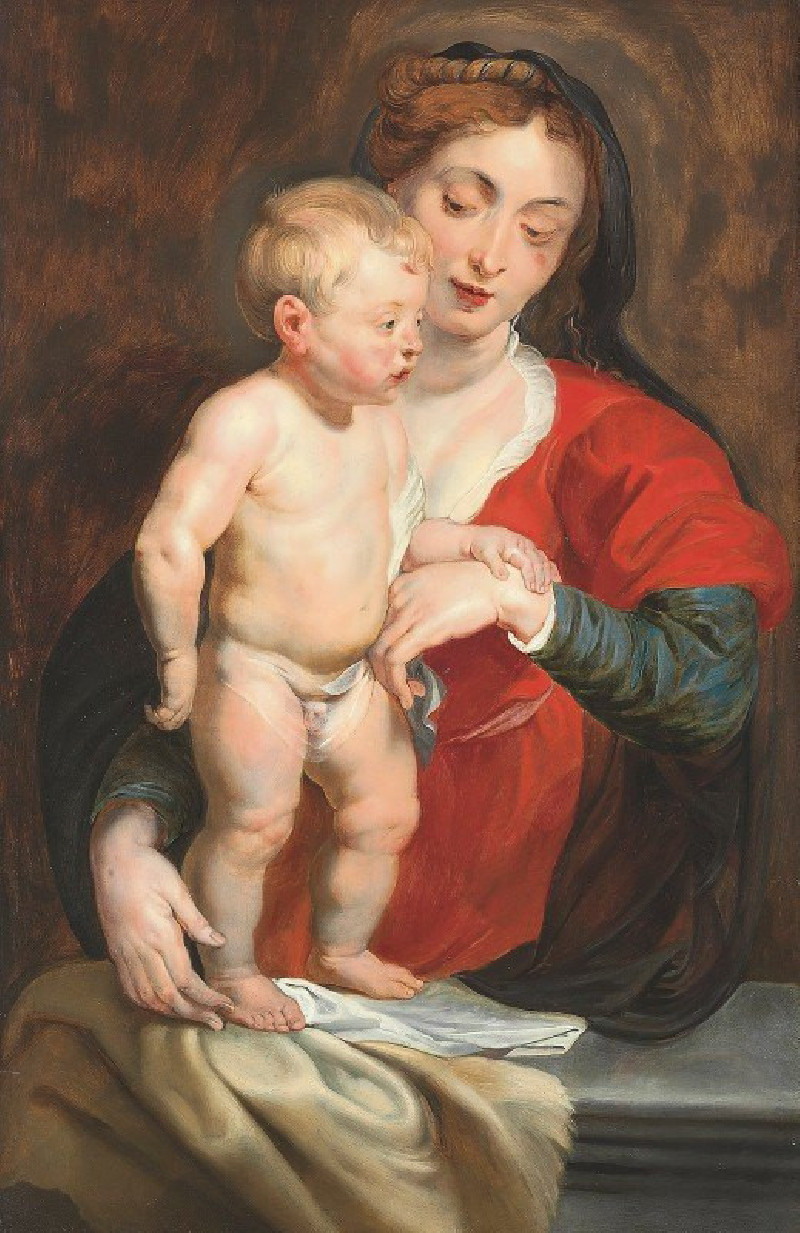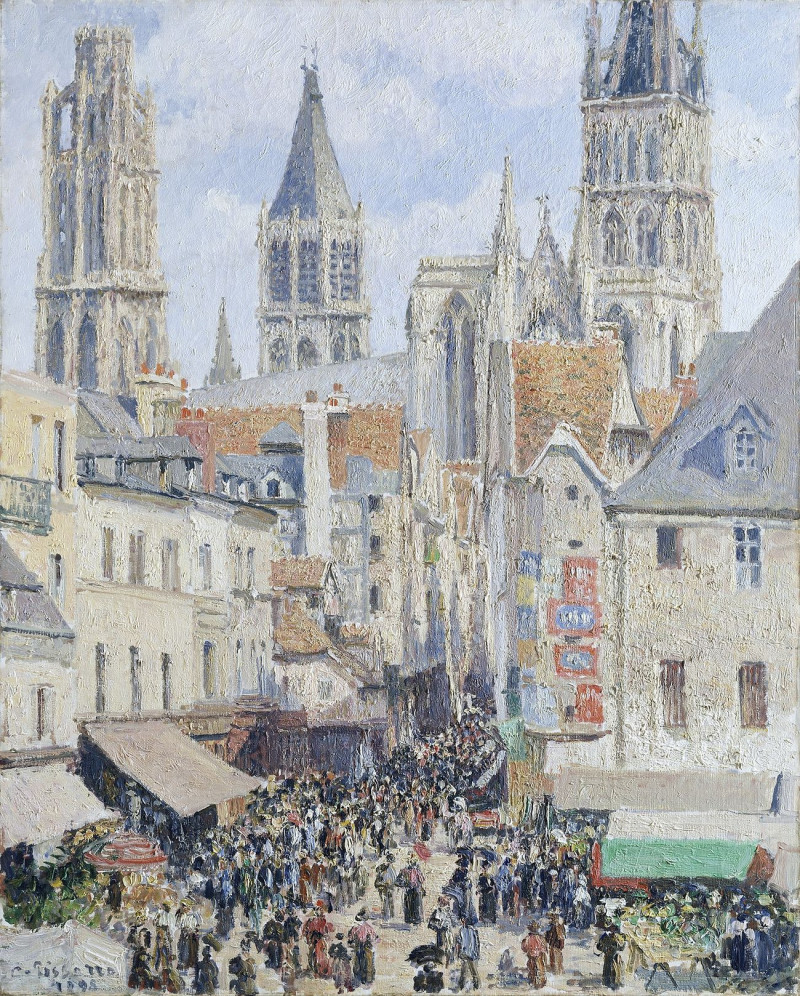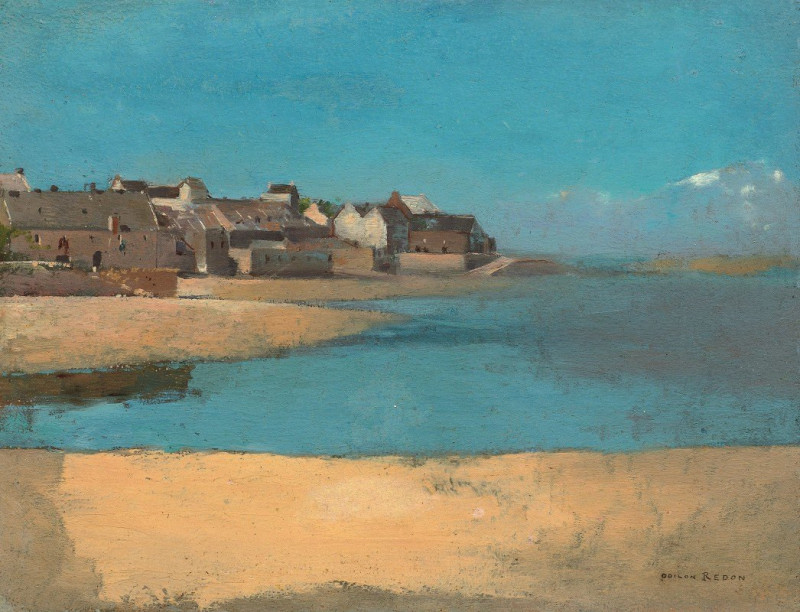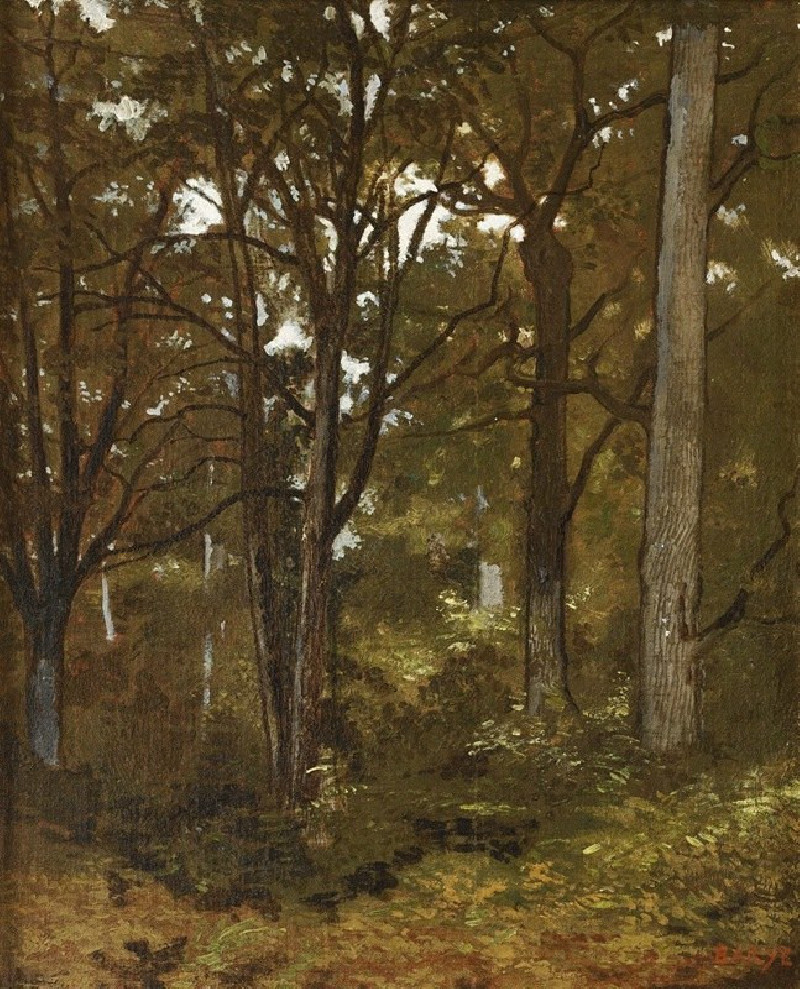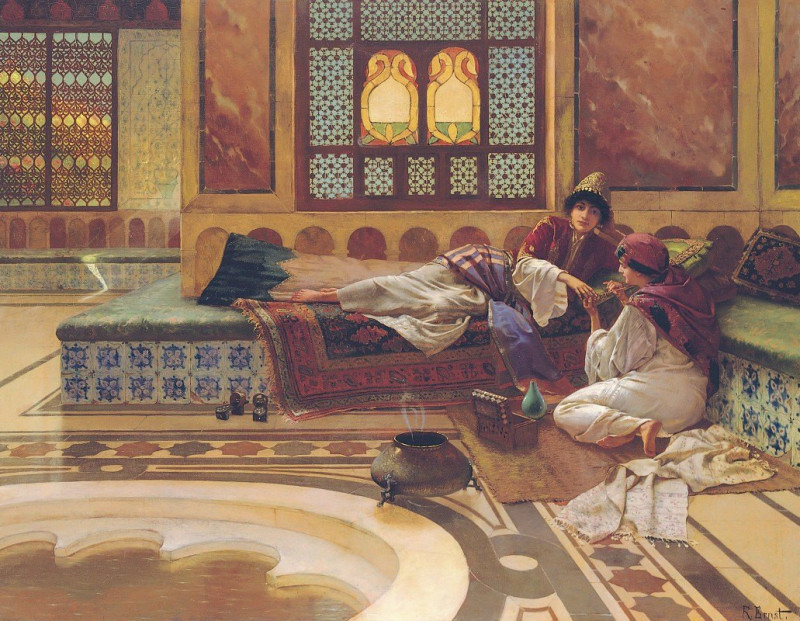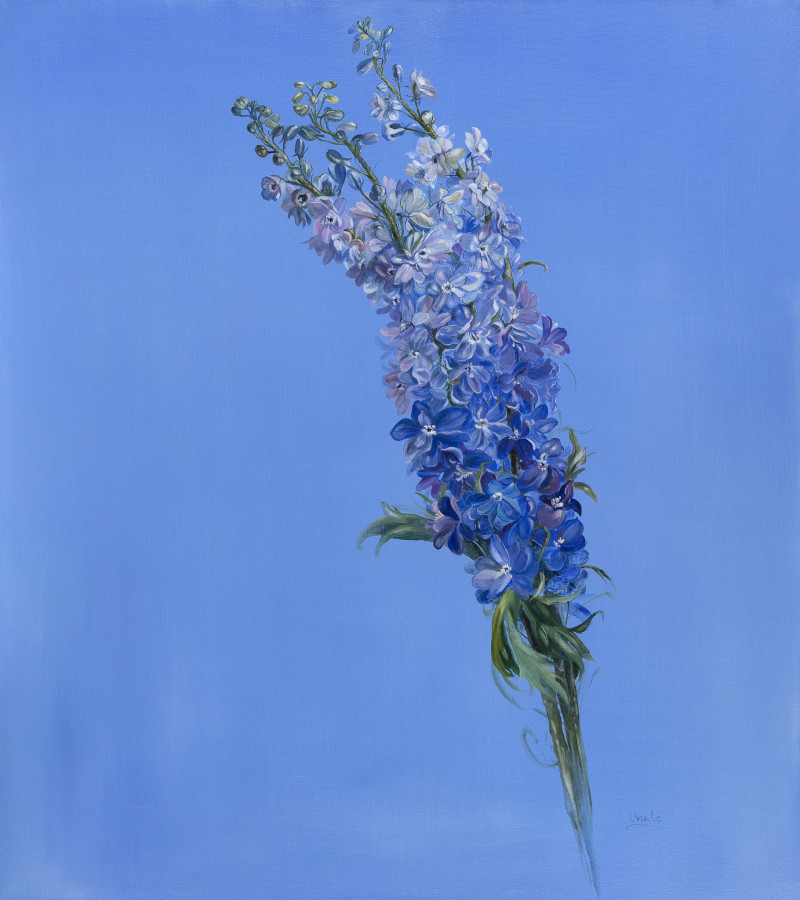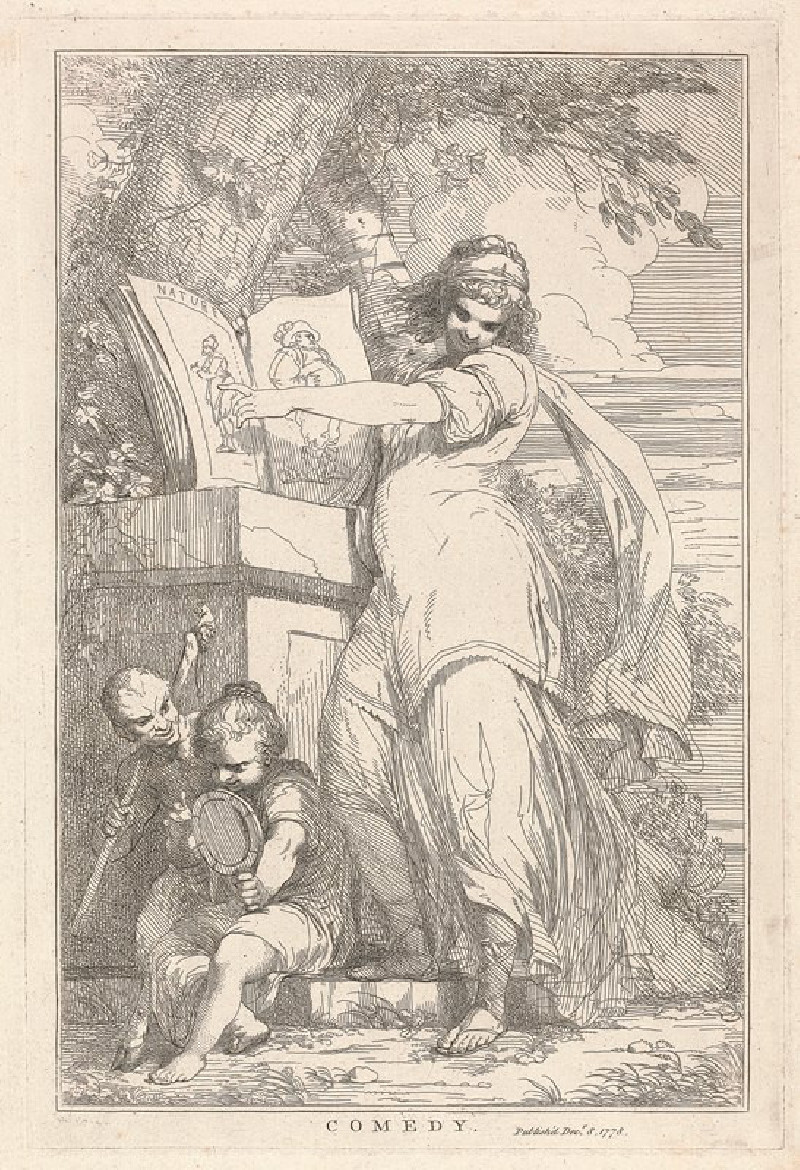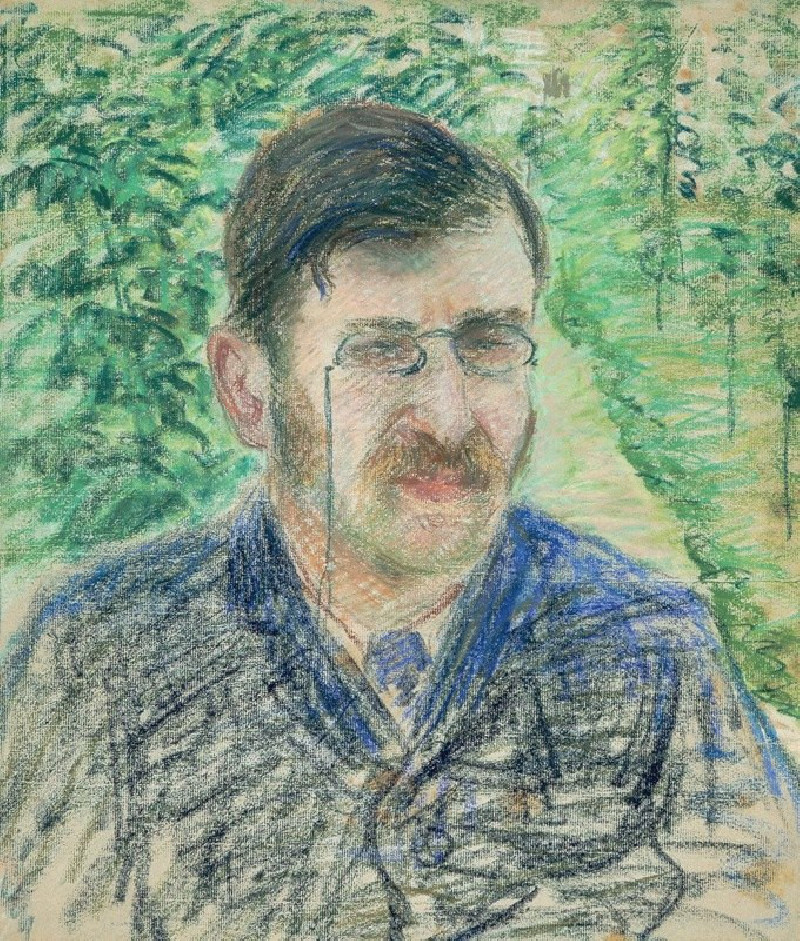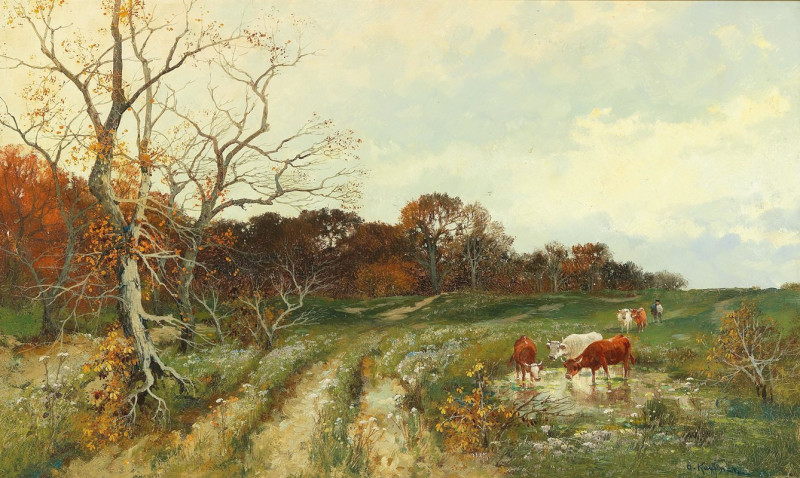Labastide-Du-Vert (circa 1920)
Technique: Giclée quality print
Recommended by our customers
More about this artwork
Tucked away in the charming countryside, Henri Martin's painting "Labastide-Du-Vert" is a striking work that captures the idyllic beauty of rural France in the early 20th century. Created around 1920, this piece showcases Martin’s mastery in blending light and texture to evoke a serene, almost ethereal quality.In "Labastide-Du-Vert," the viewer is invited into a lush landscape dotted with vibrant colors. The painting depicts a quaint stone cottage surrounded by tall, slender trees which sway gently as if whispering secrets to the soft sky. The trees, marked by their verdant and yellow hues, frame the cottage, creating a natural archway that guides the eye towards the warm, ochre walls of the home.The foreground is mesmerizing with reflections in the tranquil waters of a small pond, mirroring the clear blue sky and the flourishes of the surrounding greenery. The use of light and shadow is particularly notable; Martin employs a tapestry of brushstrokes that capture the dynamic interplay of sunlight filtering through the leaves, casting dappled shadows across the stone paths and vibrant flora.Henri Martin's "Labastide-Du-Vert" invites contemplation and offers a pause from the rush of life, encapsulating a moment in time where nature and architecture exist in perfect harmony.
Delivery
Returns
Henri-Jean Guillaume "Henri" Martin (5 August 1860 – 12 November 1943) was a French painter. Elected to the Académie des Beaux-Arts in 1917, he is known for his early 1920s work on the walls of the Salle de l'Assemblée générale, where the members of the Conseil d'État meet in the Palais-Royal in Paris. Other notable institutions that have featured his Post-Impressionist paintings in their halls through public procurement include the Élysée Palace, Sorbonne, Hôtel de Ville de Paris, Palais de Justice de Paris, as well as Capitole de Toulouse, although the Musée des Beaux-Arts de Bordeaux and Musée des Augustins also have sizeable public collections.

